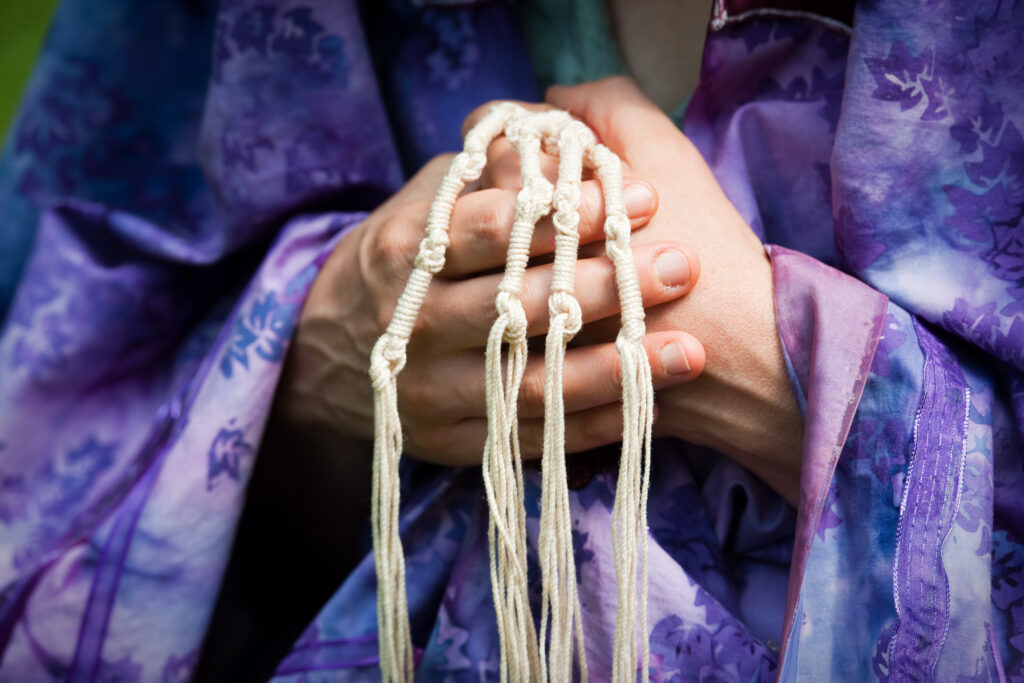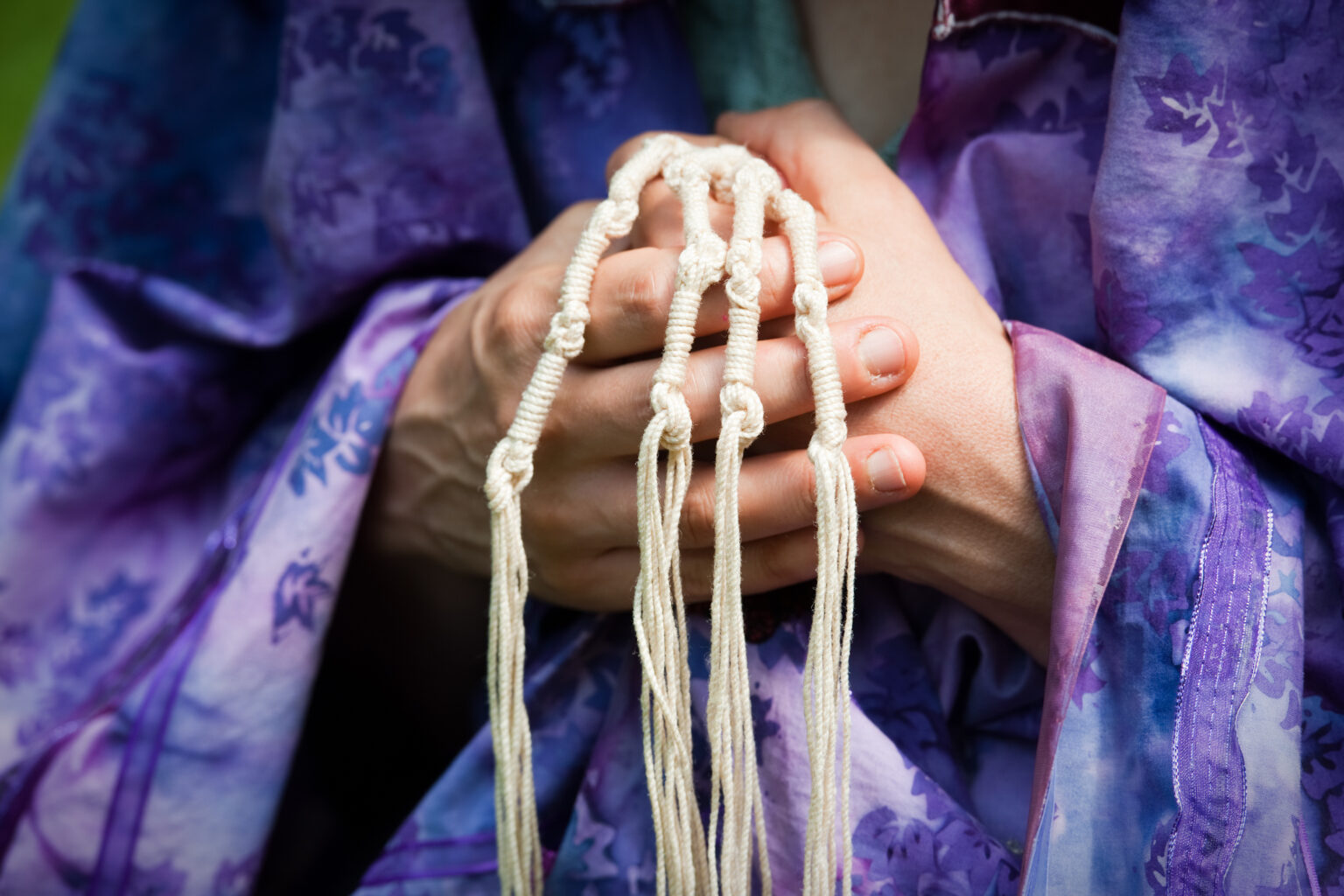This ritual is intended for times when you have to make an appeal to people in power. Sometimes, in advocacy settings or just in life, you have to go into rooms with people who disagree with your values or your very existence and try to convince them of something. Your version of the truth and your vision for the world can seem to run up against an immovable opposing force, which can feel extremely upsetting and frightening, but you often still have to keep it together while you’re in the room. Those moments can be extremely frustrating. Here, you can draw on the ancient Jewish technology of tzitzit as a framework for a mindfulness ritual that can carry you through these discouraging moments.
Note: There is great power in trying to change the world in a way that involves making demands and then making it unpleasant or uncomfortable for others if those demands aren’t met – protests, sit-ins, and other forms of direct action. This ritual isn’t intended for those moments; instead, it’s intended for the conversations, the negotiations, the “trying in good faith” that often happens before, after, and around these more forceful forms of action. Trying in good faith often fails, but is still an important part of the change-making process. This ritual is meant to help fortify people for further work after these often-requisite setbacks.
First, find your cord. Tzitzit are typically tied using a group of four strings doubled over, which then are wrapped around themselves seven, eight, eleven, and thirteen times and secured with four knots between the wrapping. However, this ritual is intended to be adaptable, quick, and low-pressure, so you can use whatever tie-able material you are best able to get your hands on. Whether it’s yarn, a shoelace, a rubber band, a scrap piece of fabric – anything that can be easily knotted works well.
Hold the cord you’re using in your hands. Explore it; run in through your hands, wind it around your fingers, ball it up, pull it taut. How does it feel? Is it rough or soft? Does it have stretchiness, or is there resistance? Take a moment to let the rest of the world fall away; focus all your attention on the tactile experience of your cord.
Tie one or more knots in your cord. If you want your ties to more resemble traditional tzitzit, you can use multiple strands, multiple knots, or experiment with wrapping – but again, this is an adaptable, low-pressure ritual. Do whatever feels right to you and makes the cord feel good in your hands.
[Invitation: Read aloud if you’re comfortable doing so]
Just as Moses approached Pharaoh to appeal for his people’s freedom, I now approach another person for the sake of myself, my community, and the future I want to bring into being.
My heart might pound, my palms might sweat, my voice might falter, and my eyes might fill with tears. These are all signs that I am human, and that I care a lot about what I am about to do.
As I tie this cord into knots to make it stronger, I become stronger. Just as tzitzit serve as a reminder of G-d’s commandments, may this cord anchor me and remind me of my convictions.
Baruch Atah Adonai Eloheinu Melech Ha’olam, Shenatan lanu hizdamnut l’takein et ha-olam.
(Blessed are You, Adonai our God, Ruler of the universe, who has given us the opportunity to mend the world.)
Take a moment to feel the texture of the knotted cord in your hand, and let this ground you.
Then, go in and have the conversation in which you are making your appeal. As you do, return your attention to your cord as needed. Hold it in your pocket and run your fingers over the knots whenever you need extra support.
When your appeal is over and you can exit the space, take the cord out of your pocket, and slowly begin to untie the knots you made in it. As you loosen the knots, picture yourself loosening. Take a deep breath, and release whatever you had to hold in during that conversation.
If it’s safe to do so and feels helpful, you can use your un-knotted cord to release any pent-up frustration. Try to stretch it as taut as you can, thrash it on the floor, throw it across the room.
When you are finished, read aloud if you’re comfortable:
That conversation was one small step in a movement much bigger than me. It is neither the beginning nor the end of the work that will be done.
לֹא עָלֶֽיךָ הַמְּלָאכָה לִגְמוֹר, וְלֹא אַתָּה בֶןחוֹרִין לְהִבָּטֵל מִמֶּֽנָּה
Lo alecha hamlacha ligmor, v’lo atah ben chorin l’hilatel mimena.
(We are not obligated to finish the work [of repairing the world], nor are we free to desist from it.)











